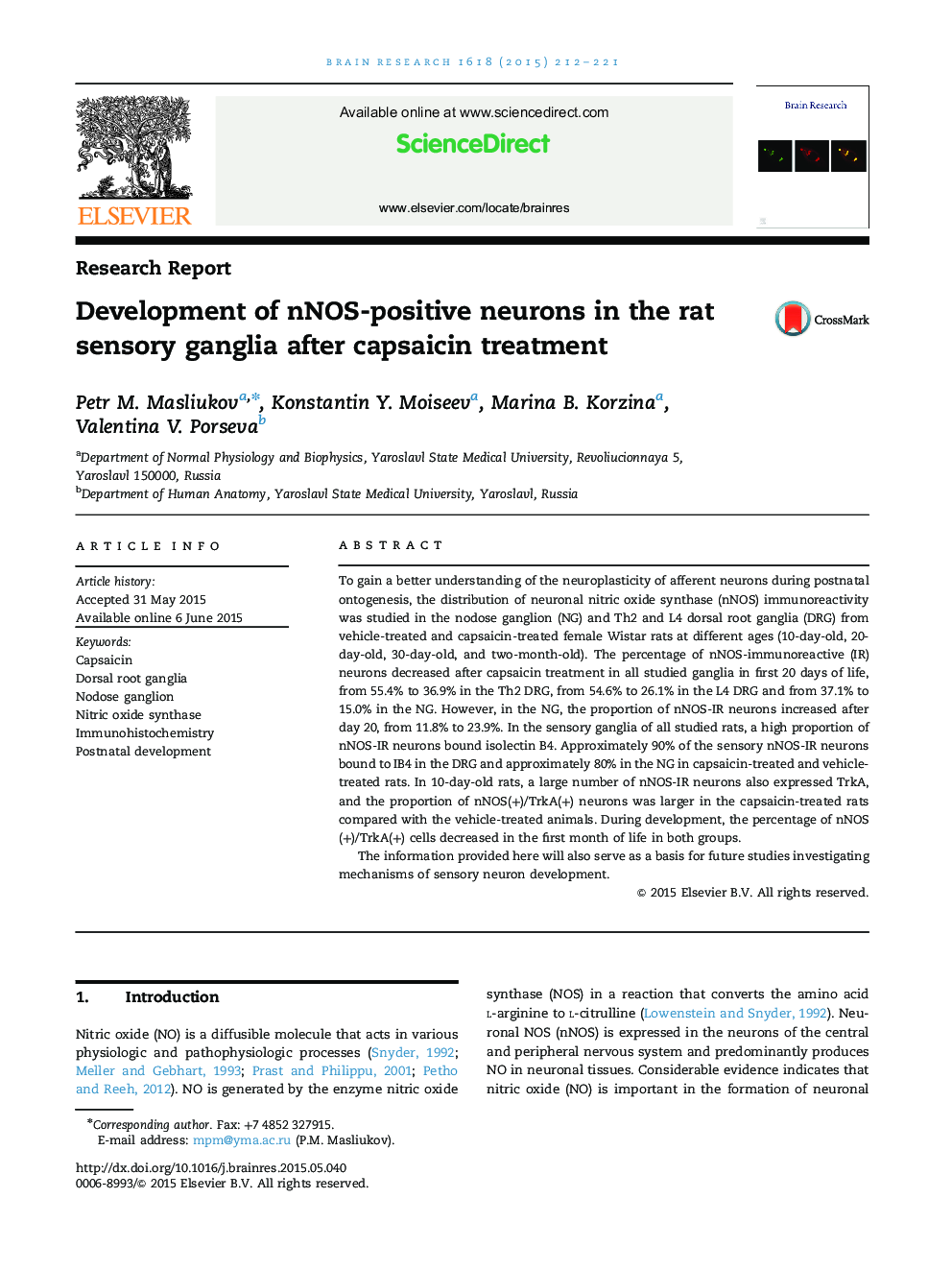| Article ID | Journal | Published Year | Pages | File Type |
|---|---|---|---|---|
| 6263048 | Brain Research | 2015 | 10 Pages |
â¢The development of nNOS+ sensory neurons was studied in capsaicin-treated rats.â¢The percentage of nNOS+ cells decreased after capsaicin treatment in sensory ganglia.â¢In the sensory ganglia, a high proportion of nNOS+ neurons binds isolectin B4.â¢The percentage of nNOS+/trkA+ cells decreased in the first month of life.
To gain a better understanding of the neuroplasticity of afferent neurons during postnatal ontogenesis, the distribution of neuronal nitric oxide synthase (nNOS) immunoreactivity was studied in the nodose ganglion (NG) and Th2 and L4 dorsal root ganglia (DRG) from vehicle-treated and capsaicin-treated female Wistar rats at different ages (10-day-old, 20-day-old, 30-day-old, and two-month-old). The percentage of nNOS-immunoreactive (IR) neurons decreased after capsaicin treatment in all studied ganglia in first 20 days of life, from 55.4% to 36.9% in the Th2 DRG, from 54.6% to 26.1% in the L4 DRG and from 37.1% to 15.0% in the NG. However, in the NG, the proportion of nNOS-IR neurons increased after day 20, from 11.8% to 23.9%. In the sensory ganglia of all studied rats, a high proportion of nNOS-IR neurons bound isolectin B4. Approximately 90% of the sensory nNOS-IR neurons bound to IB4 in the DRG and approximately 80% in the NG in capsaicin-treated and vehicle-treated rats. In 10-day-old rats, a large number of nNOS-IR neurons also expressed TrkA, and the proportion of nNOS(+)/TrkA(+) neurons was larger in the capsaicin-treated rats compared with the vehicle-treated animals. During development, the percentage of nNOS(+)/TrkA(+) cells decreased in the first month of life in both groups.The information provided here will also serve as a basis for future studies investigating mechanisms of sensory neuron development.
